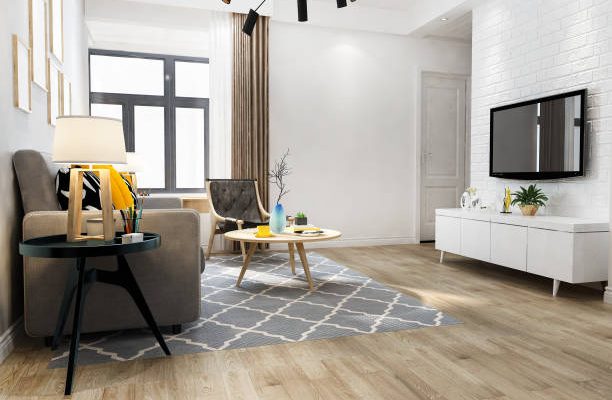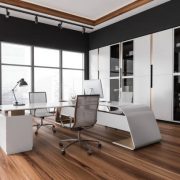Recycling is beneficial for the environment and helpful for businesses. Recycling is a largely untapped resource. It is an extra resource stream ready to be utilized by the industry and a potential that many enterprises are now overlooking.
New materials are developed to meet today’s idea of beauty and aesthetics as the interior, and exterior design of homes and commercial buildings evolves. Along with this idea of coexisting with the environment, the architectural innovation of replacing natural wood with plaswood or artificial wood was born. These products are designed to attract the attention of homeowners and business owners for their beauty and excellent features that make the home a safe place to live in, and the building stands sturdy and tall.
What is Plaswood?
Plaswood is a product of recycling innovation created to replace natural wood somehow while still maintaining its look and beauty. This wood-like product is manufactured entirely of plastic waste reclaimed from landfills, also known as uPVC/PVCu (unplasticized Polyvinyl Chloride).
The material has several applications, and it sets no boundaries. It is particularly appropriate for indoor and outdoor decorations such as built-in furniture in the living room, kitchen, bathroom, and any other room or structure. It may also be used in the interior design of an airplane, passenger cabin, train, or bus, as well as an electrical panel, wood paneling, oil pump dispenser, wall, ceiling, CNC stencil or stencil, plaswood decking, and many more applications.
What is the Difference Between Plaswood and Natural Wood?
Most homeowners are split between natural or artificial wood when it comes to installing or renovating their decks, awning, flooring, ceiling, and other parts of the house. However, before investing in either, it is preferable to start by learning these facts about the two materials to save money, time, and effort in the long run.
- Natural Wood– Natural wood is classified into hardwood and softwood. Pressure treatment is commonly used on both types of wood. It’s great that, as technology progresses, this type of treatment method is becoming more straightforward by using Acetylation. This type of wood procedure, also known as Acetylation Wood Technology, removes moisture from wood by converting the hydroxyl content of the wood into an acetyl group. These two methods are used to ensure the material’s longevity and efficacy against termite and insect assaults and fungal deterioration.
- Plaswood– While plaswood sheet is made mainly of wood fibers and polymers such as vinyl, PVC, and composites that have been treated to give them a wood-like look. The beauty of genuine wood competes with the durability of synthetic materials that are unappealing to insects and termites.
Let us now analyze the differences in stability, maintenance, U.V. resistance, weather resistance, slip resistance, and splinter-free natural and fake wood.
- Stability – Both materials are strong and suitable for home improvement.
- Maintenance – Using a water hose to clear excess debris such as soil, leaves, and other filth that will make the surface slippery is not essential for plaswood. Unlike natural wood, which requires more frequent care, homeowners should apply a coating every six months to a year to retain its beauty. Be aware that natural wood might have hairline or hair strands and can shatter due to its nature.
- U.V. Resistant and Weather Resistant – Plastic wood has a high U.V. and weather resistance, making it ideal for humid areas and the exterior of the house. This will shield you from direct sunlight and changeable weather. While natural wood can absorb heat, with the continual changing of the weather, there is a considerable danger of degradation if drenched with water often.
- Slip Resistance and Splinter Free – Because of the materials used in Artificial Wood, you can be confident that it has good slip resistance and is safe even while walking barefoot or touching the refurbished area because it is splinter-free. Natural wood will vary depending on the species of wood utilized. As a result of the high quality of Natural Wood, this may be ensured to be slip-resistant and splinter-free.
Advantages of Replacing Natural Wood With Plastic Wood
Plaswood sheets emphasize the advantages that you may have because it is created to outperform the attributes of genuine wood. These are termite and insect resistance/mold and fungi resistance, water resistance, heat resistance, sound resistance, light weight, durability, does not swell, does not burn, smooth, pliable, industrially friendly, aesthetically attractive, and chemical resistance.
- Termite and insect-resistant/mold and fungal-resistant – the substance is constructed of plastic, making it inedible to termites and molds, fungi, and insects. As a result, the material lasts longer than wood.
- Waterproof – the method of creating plaswood entails pressing the polymers to ensure that the membrane is waterproof and totally resists water absorption, as opposed to traditional wood materials, which absorb water.
- Heat Resistant – The problem of heat absorption, which keeps your house or building warm, is no longer an issue because it has a high tolerance and deflects, making it more suited for thermal insulation indoors and outdoors.
- Soundproof – the plaswood sheet’s structural membrane reduces the transmission of loud sounds, making it suitable for installation in rooms and offices.
- Lightweight – because the substance is plastic, it is clear that plaswood is lighter than genuine wood while lasting longer.
- Robust – Because the pressing process allows the material to remain compact and waterproof, it is more durable and can endure anything than other materials.
- It does not cause decay– since it is waterproof and water cannot permeate the substance, guaranteeing a more extended life period.
- It does not swell – because it is waterproof and heat resistant, it is less prone to expand.
- Does not burn – the product is difficult to ignite, supports combustion, burns slowly, and is easily extinguished. Simply put, this material is designed to endure the fire.
- Smooth – Unlike wood, you won’t have to sand the plaswood sheet because the surface is already smooth.
- Pliable – Although robust and durable, the material is malleable or flexible, making it easier to bend, drill, and stencil while maintaining its attractive and agreeable look.
- Simple to install– one of the reasons why plaswood sheet is popular in the market is that it is industrially friendly and easy to install. People who enjoy “DIY” items are drawn to it.
- Aesthetically pleasing – a range of colors are available and can even be painted if desired. This adds aesthetic value to your efforts.
- Chemical resistance – the projects you may be working on are less likely to be exposed to chemicals. However, the material is suitable for regions with a significant risk of chemical exposure because plaswood sheet is resistant to severe chemicals.
Is It Safe To Use Plaswood Over Plastic Wood?
Plaswood is definitely safe. It does not leech any chemicals and does not need to be repainted or chemically treated before use. Because of its surface qualities, it is also more resistant to stains, marks, and scratches. It is safe to use in high-traffic places.
Is Plaswood Sustainable?
Plaswood is constructed entirely of recycled plastic. This material has been saved from the landfill. Recycling discarded materials are critical to the transition to the cycle of the economy where nothing is wasted. Currently, massive volumes of plastic are deteriorating in landfills, causing several environmental issues; the most surprising answer would be to halt manufacturing. During the transition to a world with less plastic recycling, the plastic now in use is our most incredible alternative. Furthermore, Plaswood is long-lasting and requires little maintenance, making it a practical choice over other materials.
How Long Plaswood Will Last?
Your home is an asset and investment. As much as you wanted it to appear perfect, you’ll appreciate it more if it lasts decades. If you choose the Thai Plastwood brand for your house remodeling, the product’s selling feature is its life span, which lasts at least 20 to 30 years and may last longer with good preservation. You won’t have to worry about anything in these years since you’ll stay home with a pleasant and pleasing face.
Which is Better, Plaswood or Natural Wood?
It is critical to understand that house renovation and building alternatives have expanded dramatically in recent years. These improvements provided options for plaswoods over genuine wood products. With the facts presented in this article, plaswoods are the superior choice for your house installation or restoration in terms of durability, lifespan, beauty, and advantages to homeowners and the environment. Even if the initial cost is higher, the benefits are listed more than makeup.
Where to Buy Quality Plaswood to Replace Natural Wood?
Buy from the most reputable Thai Plastwood provider to ensure you get high-quality Plastwood Sheet.
For more than 28 years, the Thai Plastwood Company, situated at 500/2, 3 Rd. FL., K.M. Riverside Build., Rama 3 Rd., Bangkhlo, Bang Kho Laem, Bangkok 10120, under the trademark “Mountain” provides you with high-quality flat Plastwood Sheets manufactured in Germany. You can ensure that the product’s quality is as solid and long-lasting as the company’s.
For more information, please visit www.thaiplastwood.com .




















